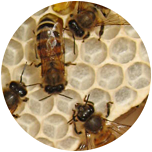
This was one of my first posts on TreeHugger.com.
One day I tried to figure out why no one knows how to do anything anymore. We can’t understand, let alone repair, most of the gadgets we use everyday. We increasingly eat packaged and pre-prepared food; even organic food often comes wrapped in plastic. We don’t know how to grow tomatoes, can peaches, hem pants, or build fences.
As the last generations of depression-era children or back-to-the-landers take their leave of this world, these skills go with them. When we try to learn from scratch we soon discover that recipes in books don’t tell half the story.
I have never found why this knowledge started slipping away from us, but I did start trying to re-learn some of the basics. I now make my own soap, hand lotion, yogourt, and bread. I am trying to figure out toothpaste, but it is hard to find good information on abrasion damage. I also found a great cheese site, and I can’t wait to try it.
I feel great satisfaction when I make things for myself, and I get a surprising amount of cool points when people discover that I can create things usually only found in plastic tubs at the supermarket.
Anyhow, here is my soap recipe. It is customized to use full bottles of most of the oils, so you don’t have a lot of inventory lying around, and you don’t have to do a lot of measuring.
Let me stress that soap-making can be dangerous. Only make soap when you are comfortable with the safety procedures. And, don’t sue me.
This recipe makes a great soap that I regularly give as gifts. Making your own soap also has a certain cool factor, and I have had two soap parties for people who want to learn how to make their own.
Normally, when making soap, you do a lot of finicky weighing, since measuring by volume isn’t considered accurate enough. So far I have no problems, but I give both weight and volume in the recipe
Soap is made in two parts, lye and water and a mixture of oils. The two don’t combine easily, so they must be brought to similar temperatures. Lye and water get very hot when mixed, so the mixture must cool. The oils must be gently heated. The oil is nowhere near hot enough to cook with, but still, please do not start any fires. Every oil has a different saponification index, which is basically a measure of how much lye is required to turn that oil into soap. So, if you run out of coconut oil, don’t go replacing it with olive oil.
I mix the Lye and water in a four cup pyrex measuring cup. I heat the oil and make the soap in my big soup pot. The first time I made soap I used a whisk and my spatula, which I washed carefully later. Next time I used my Braun stick blender. Once I felt sure that I was going to make soap regularly, I bought a used stick blender at Value Village for $5.00 and dedicated it to soap making.
Lye is VERY caustic, so don’t get any on your skin. It also gives off nasty fumes, so use goggles and very good ventilation or a respirator. Check out the Materials Safety Data Sheet on lye.
You will also need a mould. You could use a 9 x 13 cake pan, and line it with wax paper. Cut the cakes of soap with a knife. I bought a used Rubbermaid bread box that is about 14” x 6” x 5”. This makes a big block of soap that is not safe to cut with a knife. I use a guitar string wrapped around a couple of chopstick handles.
The hardest thing about soap is knowing when it is done. This is judged by a state called ‘Trace’. This is when a dribble of soap kind of stays on the surface instead of sinking into the pot–think honey on a counter top as it slowly flattens out. Here is a not-very-good video of trace.
Check online for all the soap info you could want, from a very active community. The book that I used to work out this recipe is called The Soapmaker’s Companion, by Susan Miller Cavitch. This is also where I found recipes for hand lotion.
Lye – Mix in large pyrex measuring cup.
700 ml purified water
270 g or 91/4 oz lye (one small container)
Oils –Mix in a big pot
Olive oil 955g 4.5 cups
Coconut oil 390g 500ml 2 cups
Grapeseed oil 515g 500ml 2 cups
Use the cheap pomace olive oil, virgin doesn’t work as well.
Let lye mixture cool to 110F. Warm oils to 110F. When both are at the same temperature slowly pour lye mixture into oils. Mix with a stick blender until trace, scraping sides and bottom of pan periodically.
At trace, add 10ml cinnamon oil. Mix as little as possible, just enough to combine. Theoretically, the soap can harden very quickly at this stage, trapping your spatula inside a giant bar. I have never had a problem with this recipe.
Pour into mould. Wrap with heavy blankets for 24 hours to keep the heat in and help the chemical reaction.
The next day, when soap has set, cut it into bars and store, separated nicely, on brown paper in cool place. Turn over after two weeks. Use after one month.
Share the suds.
